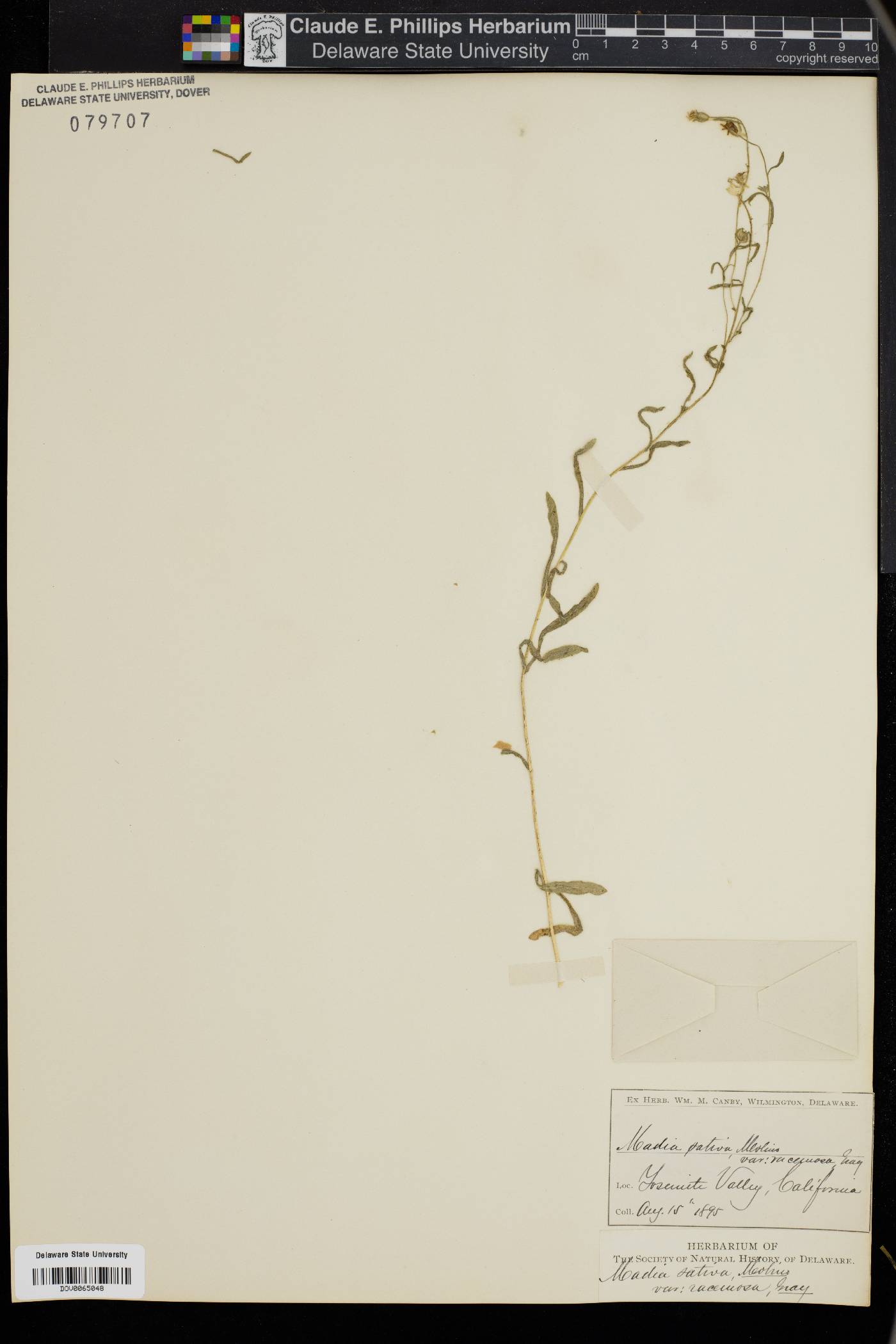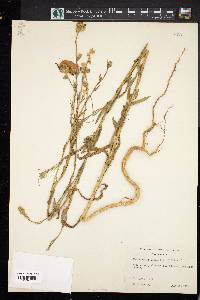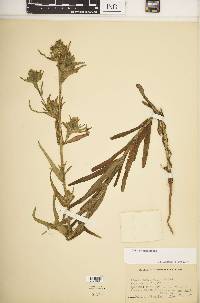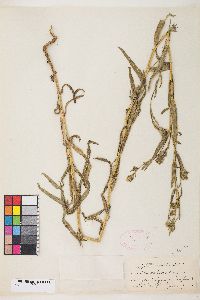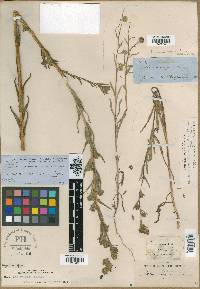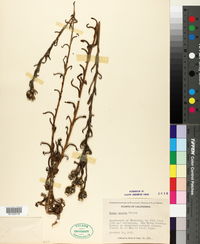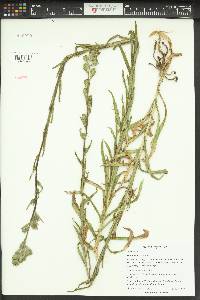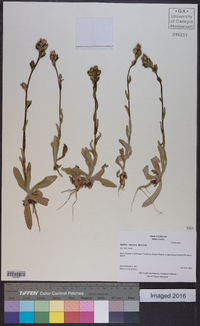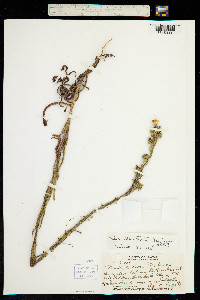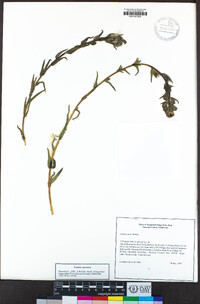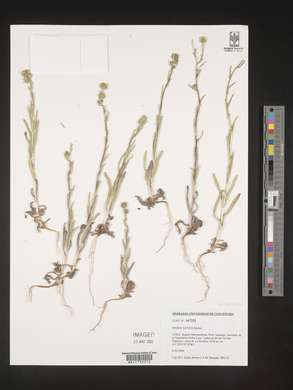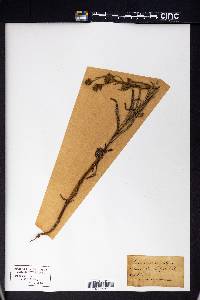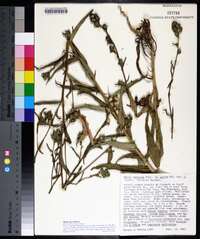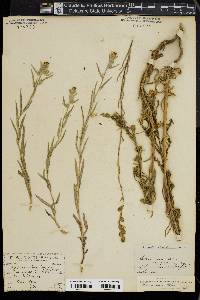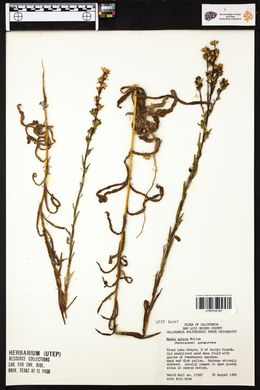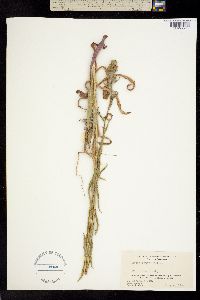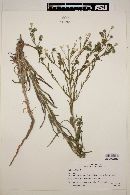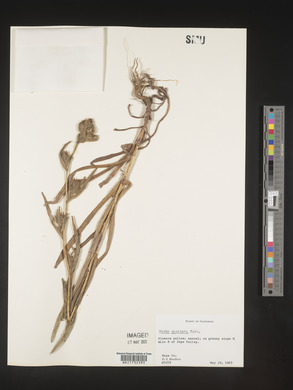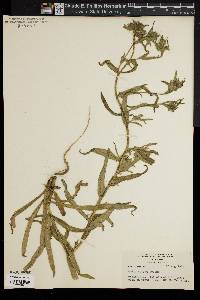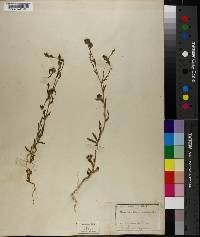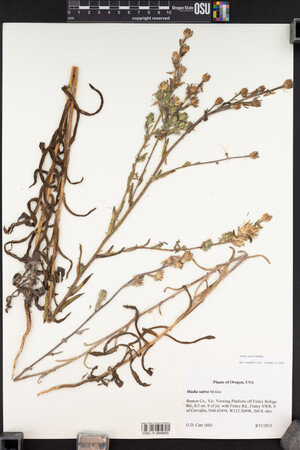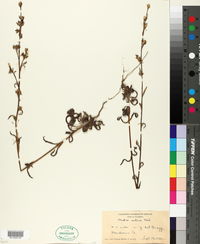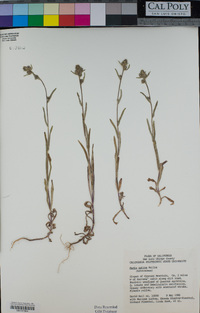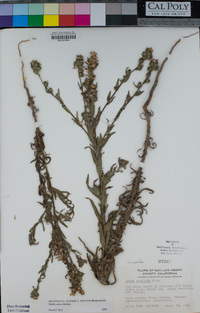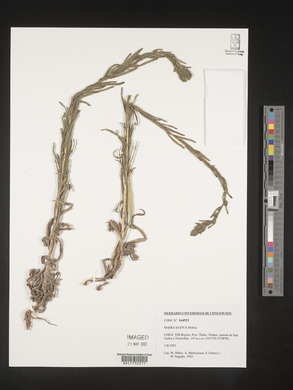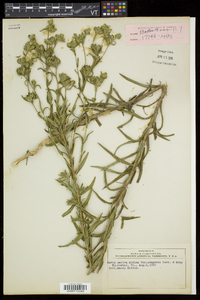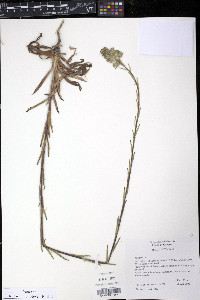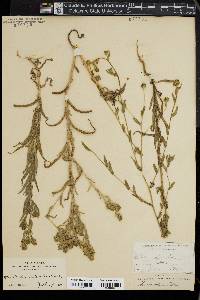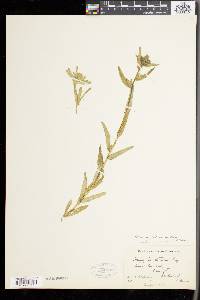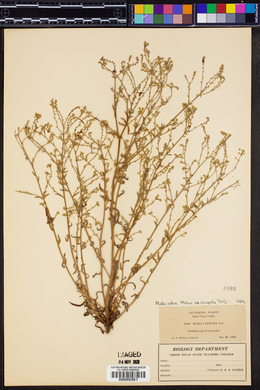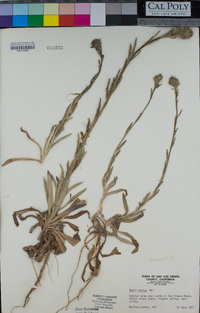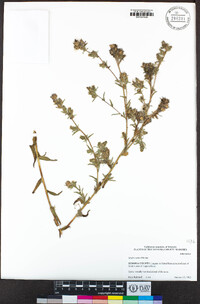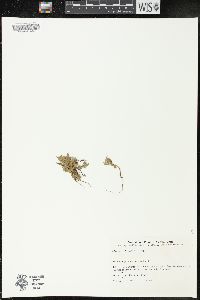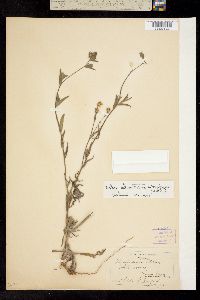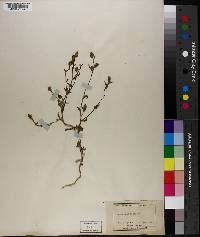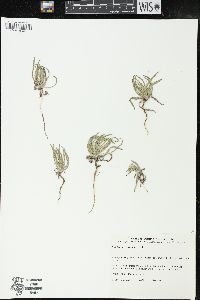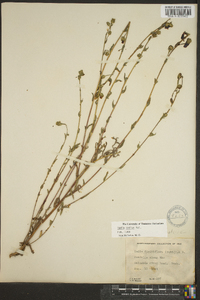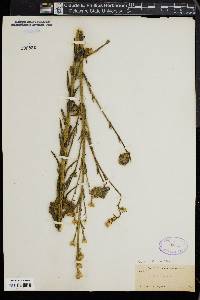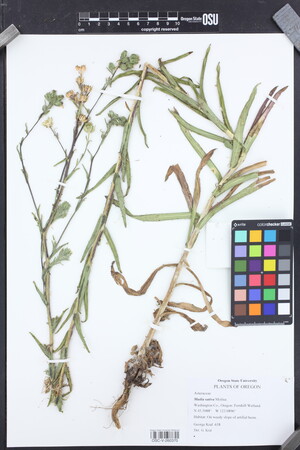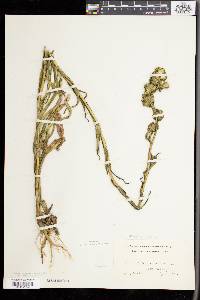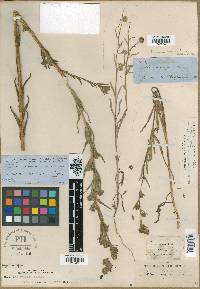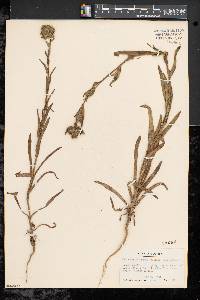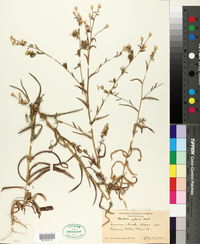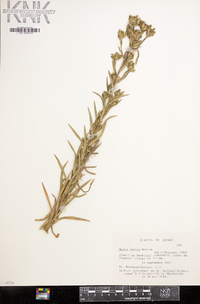Madia sativa
|
|
|
|
Family: Asteraceae
Chile tarweed, more...Chilean Tarplant
[Madia capitata Nutt., moreMadia sativa subsp. capitata Piper, Madia sativa var. congesta Torr. & A.Gray, Madorella racemosa Nutt.] |
Plants (0.3-)35-100(-240) cm, self-compatible (heads not showy). Stems hirsute and glandular-pubescent, glands yellowish, purple, or black, lateral branches rarely surpassing main stems. Leaf blades broadly lanceolate to linear-oblong or linear, 2-18 cm × 3-18(-29) mm. Heads in usually crowded, paniculiform, racemiform, or spiciform arrays. Involucres ovoid to urceolate, 6-16 mm. Phyllaries hirsute and glandular-pubescent, glands yellowish, purple, or black, apices erect or ± reflexed, flat. Paleae mostly persistent, connate 1/2+ their lengths. Ray florets (5-)8-13; corollas greenish yellow or sometimes purplish red abaxially or throughout, laminae 1.5-4 mm. Disc florets 11-14, bisexual, fertile; corollas 2-5 mm, pubescent; anthers ± dark purple. Ray cypselae black or brown, sometimes mottled, dull, compressed, beakless. Disc cypselae similar. 2n = 32. Flowering May-Oct. Grasslands, openings in shrublands and woods, disturbed sites, stream banks, roadsides; 0-1000 m; B.C., Calif., Oreg., Wash.; South America (Argentina, Chile); Pacific Islands (Hawaii, probably introduced). In North America, Madia sativa occurs on the Pacific Coast from California to British Columbia, sporadically in coastal ranges, and rarely eastward. Reports of M. sativa from Ontario and Quebec and from Alaska, Connecticut, Georgia, Idaho, Indiana, Iowa, Maine, Maryland, Massachusetts, New York, North Carolina, Pennsylvania, Vermont, and Wisconsin are putative waifs or misidentified M. glomerata. Molecular data and greenhouse studies have indicated that plants referable to M. capitata and M. sativa in California are not distinct (B. G. Baldwin, unpubl.). Sampled populations of M. sativa (including M. capitata) from California are somewhat divergent in DNA sequences from sampled Chilean populations, in apparent conflict with earlier suggestions that M. sativa was recently introduced to North America from South America by Europeans (Baldwin, unpubl.). Madia sativa has been cultivated for seed-oil in South America, Europe, Africa, and Asia Minor (E. Zardini 1992).
Coarse annual 2-10 dm, often simple, conspicuously spreading- hirsute and stipitate-glandular; lvs mostly lance-linear or linear-oblong, the lower linear-oblanceolate, 4-18 cm נ4-12 mm, entire or nearly so, sessile, crowded, erect; heads clustered along the upper part of the main stem, or at the ends of the branches, the invol ovoid or broadly urn-shaped, 6-12 mm high and wide; rays ca (8)13, 2-7 mm, disk-fls fertile; pappus none; 2n=32. Native from Wash. to Calif., and in Chile; becoming widespread as a roadside weed in e. U.S. June-Aug. Ours is var. congesta Torr. & A. Gray. (M. capitata) Gleason, Henry A. & Cronquist, Arthur J. 1991. Manual of vascular plants of northeastern United States and adjacent Canada. lxxv + 910 pp. ©The New York Botanical Garden. All rights reserved. Used by permission. From Flora of Indiana (1940) by Charles C. Deam This species was found July 21, 1929, by Paul C. Standley on an open bank in Dune Forest at Tremont, Porter County. He says: "About a dozen plants." It is undoubtedly a migrant, but on account of its weedy nature it may become established. .…… Indiana Coefficient of Conservatism: C = null, non-native Wetland Indicator Status: N/A |

